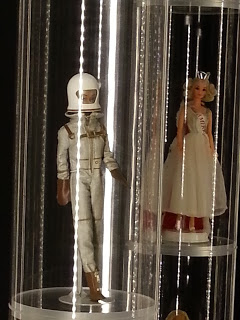Extraterrestre e Kepler-22B: è la volta buona per festeggiare il primo contatto con gli ufo?
Extraterrestre e ufo: li state cercando, li invocate come panacea di tutti i mali? Allora guardate in direzione delle costellazioni di “Lira” e “Cigno”. Perché è proprio lì che sta puntando il suo fotometro il satellite della Nasa “Kepler” che, di recente, ha scovato “Kepler-22B”, pianeta che sembra avere tutte le “misure” al posto giusto per ospitare la vita. Sita a 600 anni luce da noi, la culla extraterrestre ha una temperatura media di 22° C, è protetto da un “cuscinetto di atmosfera”, presenta dimensioni terrestri (diametro soltanto 2,4 maggiore del nostro pianeta) ma, soprattutto, può vantare l’abitabilità, in quanto ubicato nella giusta fascia, rispetto alla stella che lo illumina, il che consente all’acqua liquida di rimanere in superficie. E proprio l’H2o è uno degli oggetti del contendere, in quanto restano da quantificare le percentuali rocciose e acquee presenti sulla superficie del pianeta a misura di extraterrestre.
Il link @ Laboratori Creativi Beretta
English version
Are you looking for the aliens, invoked as a panacea for all ills? Then look in the direction of the constellations of “Lira” and Cygnus “Swan”. Because it is precisely there that its photometer is pointing the NASA satellite “Kepler” which, recently, has found “Kepler-22B”, a planet that seems to have all the “measures” in the right place to host life. Located 600 light years from us, it has an average temperature of 22 ° C, it is protected by an “atmosphere bearing”, it has terrestrial dimensions (diameter only 2.4 greater than our planet) but, above all, it can boast habitability, because it is located in the right band, compared to the star that illuminates it, which allows the liquid water to remain on the surface. And the H2O is one of the objects of contention, as it remains to quantify the rocky and water percentages present on the surface of the planet.
However, pending developments, one can imagine how life 600 light years from us can be, on a cosmic scale, like the way home. If we then think that from the planetary system around “Vega”, the brightest star of the constellation of “Lira”, came the monsters of “Goldrake” (but not only the hero without spot “Actarus”) and that always “Vega” and surroundings were the location of “Contact”, novel by “Carl Sagan” and film with “Jody Foster” (directed by “Robert Zemeckis”), the appetite comes with eating …
Il video… NASA’S Kepler Satellite discovers 1284 Planets
Traduzione in latinorun per gioco (by Google Translator)
Tu quaeris verterunt exterorum, non invocamus eos quasi panaceao pro omnibus malis? Respicite versus sidera “Lira” et “Cygnus”. Propter quod, ubi erant dirigebat photometer ex satellite NASAE Kepler hoc recens, et inventa “22B-Keplerus”, et quod videtur habere omnes planetae per “mensuras” in loci vitae ad portum. DC annos Site lux ex nobis habet mediocris temperatus in XXII ° C, tuta est “atmosphaera ex ferre,” munera ad terrestres veniamus formis (diametrum 2.4 modo major nostri planeta) sed, quod est grauius, quod gloria vestra in Habitabilitas, in eo sita est, rectum finis, ad quem lumine sidus eam, quam concedit permulcens liquidis uestigia manere in superficiem. H2o autem iustus est de his quorum habet inspexerunt, quod manet in praesentem percentages ad quantitare summis planetae superficiem lunae Et quaecumque uagos. Tamen expecto decursu ortae sunt, non possunt esse in vita potest imaginari quam DC annis a nobis lumen, in instar, a tergo sunt, sicut in platea domus. Si cogitamus ex hoc systema planetarium circa ‘Vega “stella clarissima per” sidere Lyranum “, venit novercae monstra manu Goldrake” (modo sed etiam a heros sine macula ‘Actarus “) semper et” Vega’ latum et altum et locum per “Contact” ex novo “Carolus Sagam” et filmis “Jody Foster” (nam “Zemeckis Robert, partem), quod est appetitus cum manducans …
